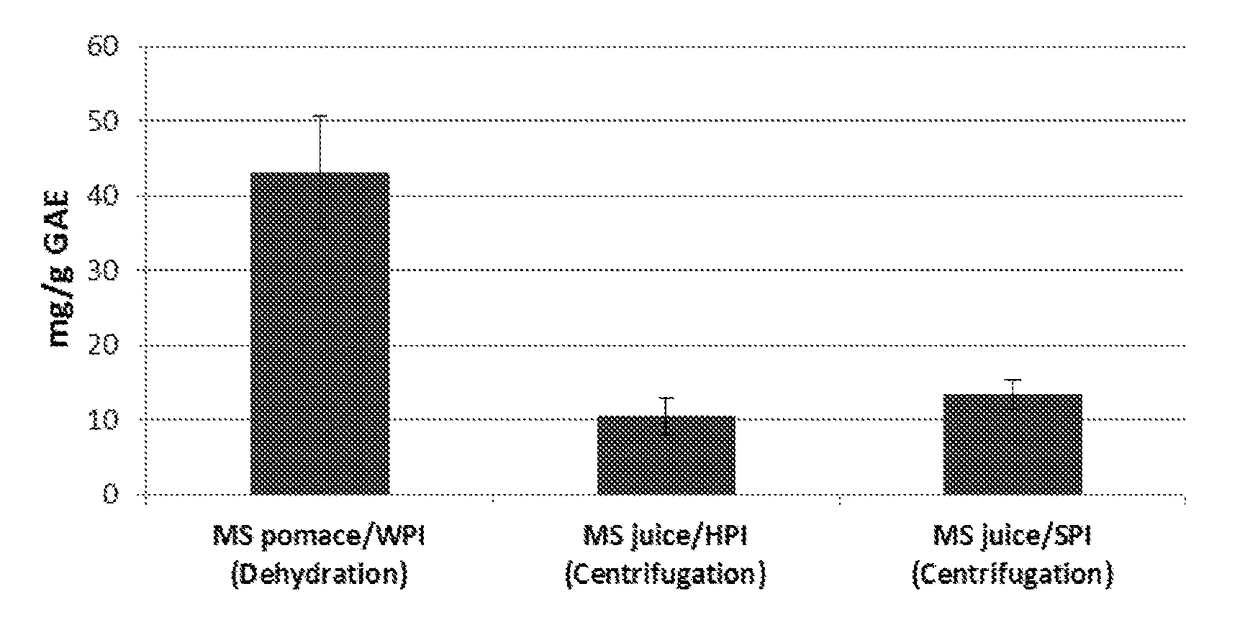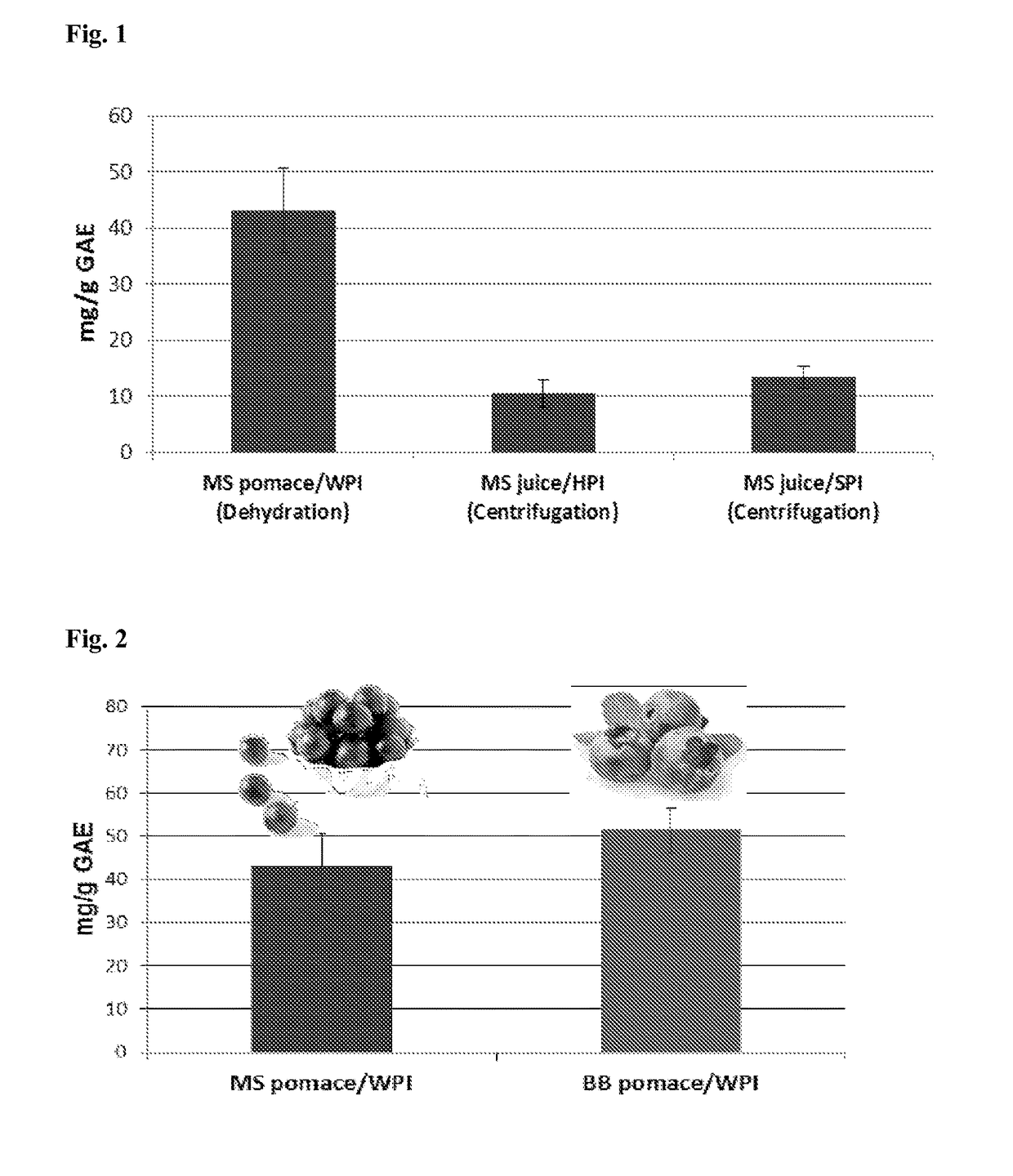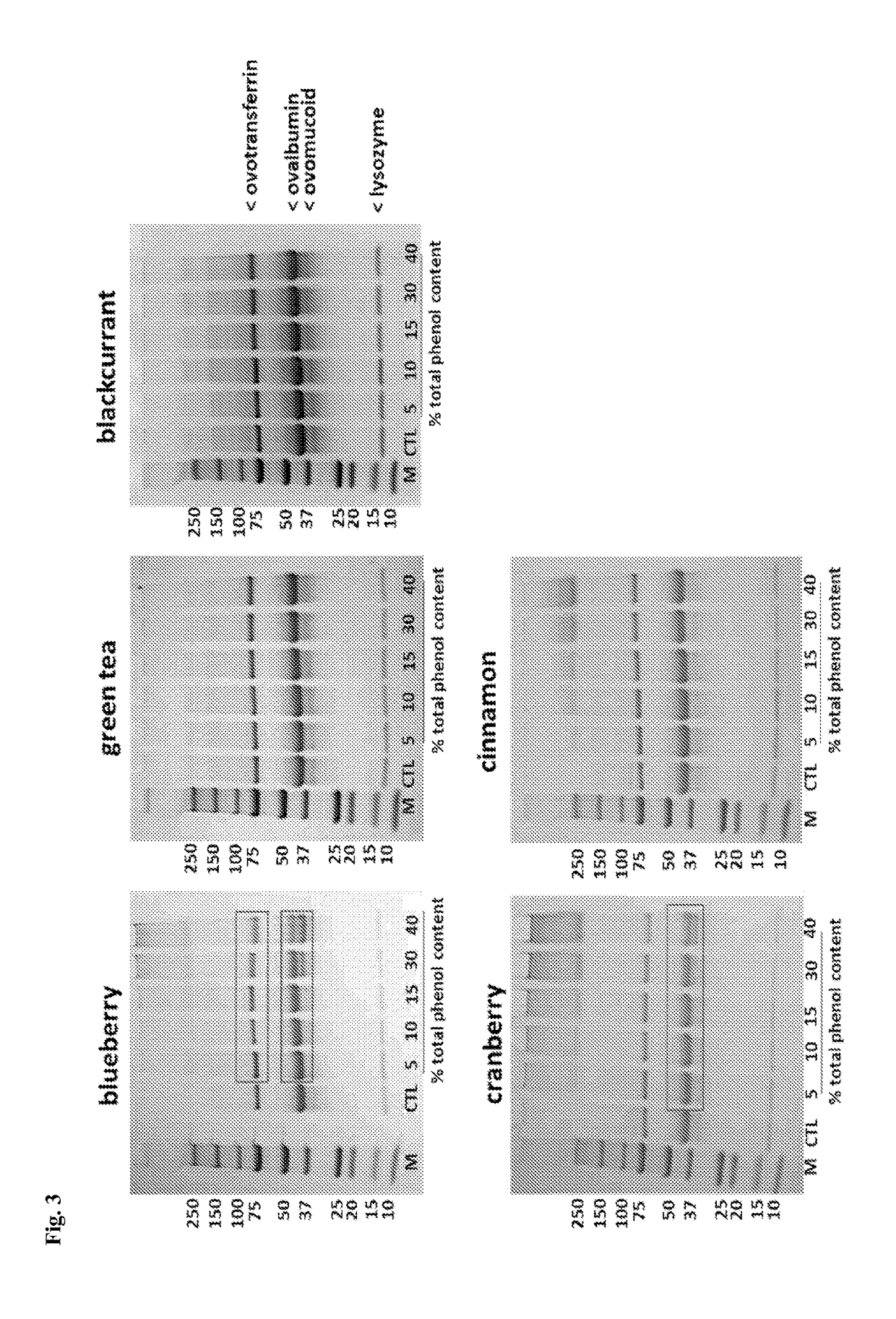Methods and compositions for attenuating allergenicity in protein products
- Summary
- Abstract
- Description
- Claims
- Application Information
AI Technical Summary
Benefits of technology
Problems solved by technology
Method used
Image
Examples
example 1
on of a Concentrated Polyphenol Extract
[0088]A series of complexed protein-polyphenol ingredients using whey protein isolate (WPI), egg protein (EP), defatted peanut flour (DPF), and soy protein isolate (SPI) were complexed with pomace extract / low sugar or sugar free polyphenol rich extracts (cranberry (CB), green tea (GT) blackcurrant (BC) and cinnamon (CN)), having concentrations of 30%, 40% and 50% total polyphenols (TP) after the complexation (sorption) process (e.g., the polyphenol may be absorbed in the protein, or adsorbed to the surface of the protein, or any combination thereof).
[0089]Pomaces are extracted with 50% ethanol solution (1:5 w / v) including heating for two hours. The extracts are filtered and ethanol is evaporated to produce an aqueous extract. It is noted that a low sugar or sugar free concentrated source of polyphenol can be achieved by (1) extracting from fruit pomaces (resulting in a naturally low or no sugar extract); 2) extracting from a polyphenol rich pla...
example 2
on of the Polyphenol-Complexed Protein
[0091]A polyphenol rich fraction from Example 1 was dissolved in water and is added to the protein source at different levels (1 L extract to 200, 100, or 50 g protein), the pH is adjusted to 4 and the mixture is lyophilized. The same procedure can be performed after the addition of polyphenol oxidase enzyme (tyrosinase enzyme), allowing the enzymatic reaction to take place for 10, 20 and 60 min, before dehydration.
[0092]Dehydration of the complexes to dry granular aggregates is accomplished by methods including but not limited to lyophilization, or vacuum tray or spray drying tactics. The physico-chemical (water activity, particle size) and phytochemical properties of the protein-polyphenol matrices are determined with treatments normalized based on protein content. The complexed protein-polyphenol matrices (prepared from whey, egg, peanut and soy proteins) are gauged to determine suppression of antigen-mediated mast cell degranulation and pro-...
example 3
nd Discussion
[0094]Prior to the methods of the invention described herein, the total amount of polyphenols that could be captured in a polyphenol-protein product was limited due to, for example, the complexation and centrifugation steps. A feature of the novel technology of the invention as described herein is that the protein product can be loaded with polyphenol without such a constraint. Therefore, the total amount of complexed polyphenolics held by the protein product (the total polyphenol concentration) can be levels of magnitude higher than that achievable using art known methods.
[0095]As seen in FIG. 1, the new technology of co-dehydration of complexed protein-polyphenol aggregates (first bar) results in a much higher mg / g total phenolics calculated as gallic acid equivalent (TP, GAE) compared to the aggregates produced using HPI or SPI, in the adjacent bars.
[0096]The concentration of phenolics that complex with the protein can be increased several times using the methods des...
PUM
| Property | Measurement | Unit |
|---|---|---|
| Temperature | aaaaa | aaaaa |
| Fraction | aaaaa | aaaaa |
| Fraction | aaaaa | aaaaa |
Abstract
Description
Claims
Application Information
 Login to View More
Login to View More - R&D
- Intellectual Property
- Life Sciences
- Materials
- Tech Scout
- Unparalleled Data Quality
- Higher Quality Content
- 60% Fewer Hallucinations
Browse by: Latest US Patents, China's latest patents, Technical Efficacy Thesaurus, Application Domain, Technology Topic, Popular Technical Reports.
© 2025 PatSnap. All rights reserved.Legal|Privacy policy|Modern Slavery Act Transparency Statement|Sitemap|About US| Contact US: help@patsnap.com



